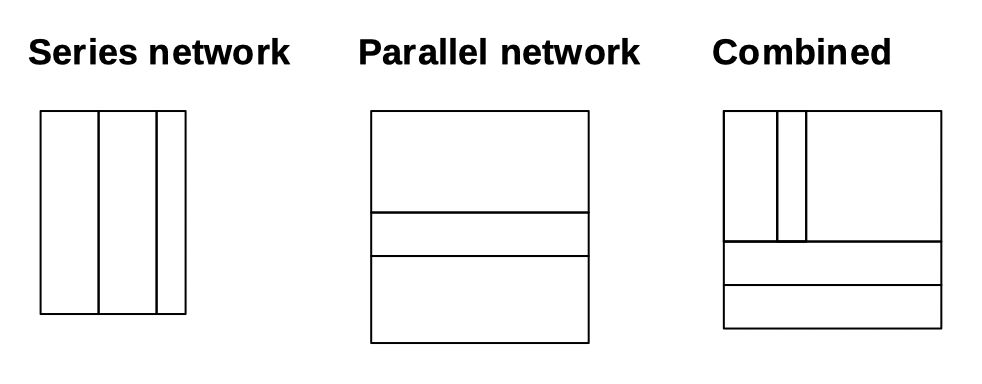Below you will find pages that utilize the taxonomy term “Curiosities”
Ohmaps: AC/DC walkabout (part 1)
I want to mention the concept of walkabout and then go for a meander with the ohmaps idea. The idea is to eventually look at if the ohmap extends from resistance (DC behaviour circuits) to impedence (AC circuits) in any useful way.
Let’s go walkabout
For quite a lot of years I would go walkabout and not really thinking about what that meant.
Walkabout is my expression for when I’m thinking about one thing and then I go off in some other interesting direction or I try to generalise something. The original ohmap idea is a good example: I was just sketching some trivial code for building image montages, and I later spotted the simple mapping to resistor networks.
Ohmaps: crossing the Wheatstone bridge
I introduced ohmaps in parts 1 and 2 and looked at some simpler examples.
We looked at parallel and series resistor networks (and combinations of those):

And I wrote this:
And not every resistor network can be shown as an ohmap – things outwith simple series/parallel nestings, like delta or Y networks.
It turns out I was a little hasty here. So how might ohmaps cope with more interesting networks?
The Lost Clock Emporium: details
Here’s a few details about the weird clocks in the previous post The Lost Clock Emporium.
The clocks are all regular analogue clocks (rotation aside), with the exception of Hades’ Timepiece, which has numbers and hands going counter-clockwise (so a mirror image of a normal clock).
The entire clocks are rotating clockwise at these rates (per day):
The Lost Clock Emporium
I can’t remember exactly how I ended up at the Lost Clock Emporium. I do remember brushing by disturbed looking people making their way out.
“Clock a load of you!”, the proprietor muttered, before looking up. “Sorry, no time for introductions, I have things to show you.”
Ohmaps (part 2)
More on Ohmaps: component failure battles, limitations, ambiguity…
Disclaimer: I am not an electrician. Nothing here is electrical advice/expertise. Insure your garments.
Ohmaps: your image montage is a resistor network
Occasionally there’s a lovely moment when I’m working on a problem and I realise I’m also looking at some other thing that seems completely unrelated. It’s like a metaphor made flesh.
These ‘ isomorphism moments’ can be powerful because the two seemingly unrelated things can give you insights into each other. Their commonality encourages you think about the essential thread running through them both.
This post details one of these moments I had recently.